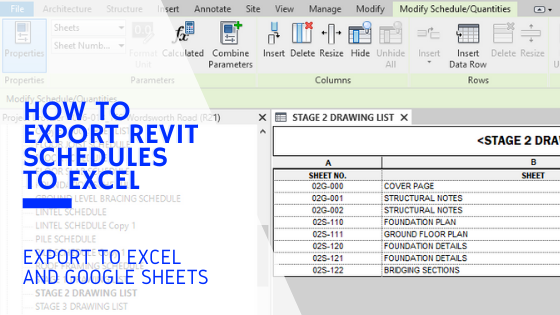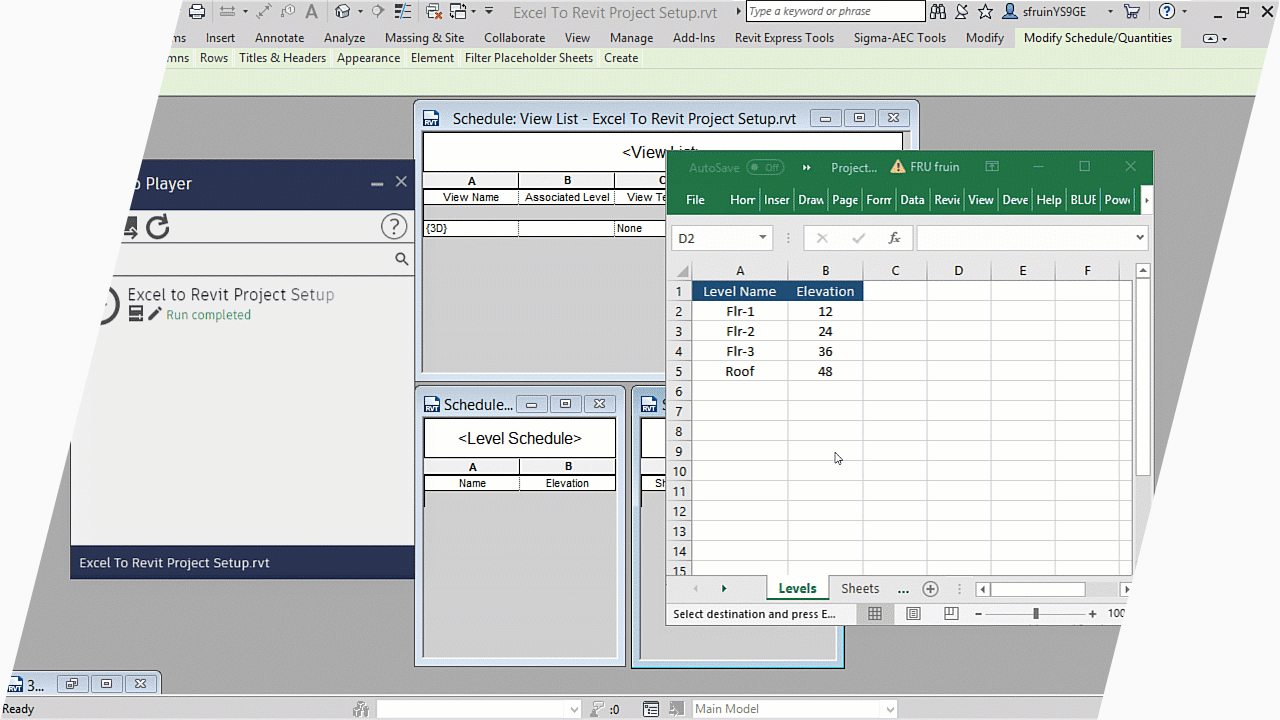Revit Tool Selection for Streamlined Modeling and Layout
Wiki Article
Excel Empowerment: Supercharge Your Revit Projects With Seamless Data Import
Are you seeking to supercharge your Revit jobs? With seamless information import, Excel empowerment can be the key to unlocking your task's complete possibility. Visualize simplifying the import process and maximizing performance via smooth data integration. In this article, we will share tips and tricks for making use of Excel in your Revit projects. Discover just how using the Excel-Revit connection can bring about success in your tasks. Get ready to take your Revit tasks to the following level with Excel empowerment.The Power of Master Revit Projects
You can supercharge your Revit jobs by harnessing the power of Excel for smooth data import. Excel is a functional tool that can greatly improve your workflow and efficiency in Revit (revit tool). With Excel, you can conveniently import and manage huge amounts of information, conserving you effort and timeAmong the essential advantages of using Master Revit is its ability to handle intricate computations and solutions. You can use Excel to do calculations on your data, such as generating amounts, computing costs, or examining efficiency. This can be especially valuable when dealing with huge jobs that need substantial computations.

In enhancement, Excel provides a familiar and straightforward interface for collaborating with information. You can organize and adjust your data in a spread sheet format, making it easy to watch and modify. This can be especially practical when teaming up with others or when you require to make quick modifications to your job data.
Furthermore, Excel enables you to quickly import and export information between Revit and various other software program applications. You can import data from external resources into Revit, such as material specs or equipment timetables, and export data from Revit to Excel for further evaluation or reporting.
Streamlining Data Import With Excel in Revit
When making use of Excel as a tool,Simplifying information import in Revit ends up being simpler. With Excel, you have the power to effortlessly import and take care of large amounts of information in your Revit tasks. By utilizing the acquainted interface and performance of Excel, you can conserve time and boost performance in your workflow.One of the crucial benefits of making use of Excel for data import in Revit is the capacity to easily arrange and manipulate information prior to importing it into your job. With Excel's effective attributes, such as sorting, filtering, and solutions, you can quickly cleanse up and style your information to fulfill the demands of your Revit job.
Moreover, Excel enables you to import information from different resources, such as data sources, spread sheets, or perhaps web-based applications. This versatility provides you the liberty to gather information from various systems and consolidate it right into one central location for very easy accessibility and management.
Additionally, Excel offers the alternative to develop custom design templates for information import in Revit. By producing templates tailored to your task's particular needs, you can guarantee consistency and precision in your data import process.
Overall, utilizing Excel as a device for data import in Revit streamlines the procedure and boosts your productivity. Why not take benefit of this effective tool and supercharge your Revit jobs with smooth data import utilizing Excel?
Making Best Use Of Performance With Seamless Information Integration
Take full advantage of effectiveness by seamlessly incorporating and handling data in your operations. Gone are the days of manually inputting data into your system, squandering precious time and resources. With smooth information assimilation, you can enhance your processes and supercharge your productivity.
Handling data comes to be a breeze when you have a smooth integration system in position. You can quickly arrange and classify your information, making it much easier to recover and assess. Bid farewell to the days of browsing with endless spread sheets for that one item of details you require.

Excel Advice for Revit Projects
With these tricks and tips, you'll have the ability to successfully manage your Revit projects utilizing Excel. Among the initial things you can do is to use Excel's effective sorting and filtering features. This will permit you to rapidly organize and analyze your job data. As an example, you can sort aspects by their names or filter them based on particular requirements, such as their status or area. One more helpful attribute is the ability to develop formulas in Excel. You can utilize formulas to calculate amounts, execute intricate computations, and even automate specific jobs. This can save you a great deal of effort and time in your Revit jobs. In addition, you can utilize Excel to create custom-made themes for data import and export. This means, you can make sure consistency and precision when moving information between Revit and Excel. Do not forget regarding Excel's conditional formatting function. You can utilize this to highlight certain aspects sites or values based upon specific problems. This can assist you rapidly identify and address any problems or anomalies in your job information. In general, understanding these Excel techniques and ideas will greatly improve your capacity to take care of and control information in your Revit jobs.Utilizing the Excel-Revit Link for Success
To maximize your Excel-Revit connection, capitalize on the capability to easily synchronize and move project details. By using this powerful link, you can supercharge your Revit projects and simplify your workflow. With simply a couple of easy actions, you can import data from Excel straight into Revit, saving you time and guaranteeing accuracy.Among the key advantages of the Excel-Revit link is the ability to move information effortlessly. Whether you are importing timetables, space information, and even geometry info, Excel gives an user-friendly user interface that permits you to organize and manipulate your information before importing it into Revit. This implies you can quickly upgrade and modify your project details in Excel, and with a couple of clicks, transfer those modifications straight into your Revit version.
In enhancement to transferring data, the Excel-Revit connection additionally permits synchronization. This suggests that any modifications made in Excel can be instantly updated in Revit, guaranteeing that your job details is constantly as much as day. This synchronization attribute is especially useful when taking care of intricate and big tasks, as it removes the demand for manual data entry and reduces the risk of errors.
Verdict
By streamlining data import and making best use of performance with seamless information combination, you can supercharge your projects and attain success. Do not wait any type of longer, start using the power of Excel in your Revit jobs today and unlock a world of opportunities.You can supercharge your Revit tasks by taking advantage of the power of Excel for seamless information import. With Excel, you have the power to effortlessly import and handle huge quantities of data in your Revit tasks (revit tools). Overall, grasping these Excel techniques and ideas will substantially boost your ability to take care of and control information in your Revit jobs
Whether you are importing schedules, room information, or even geometry info, Excel provides a straightforward interface that permits you to organize and control your information before importing it right into Revit. By navigate to this website improving information import and taking full advantage of efficiency with seamless data combination, you can supercharge your tasks and accomplish success.
Report this wiki page